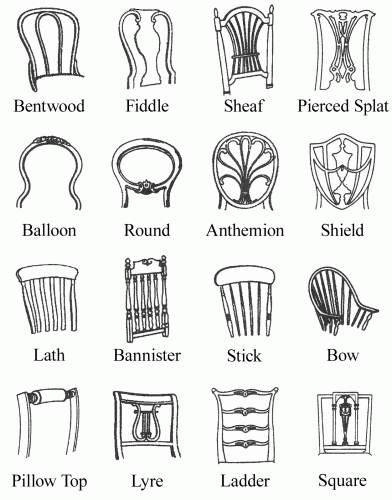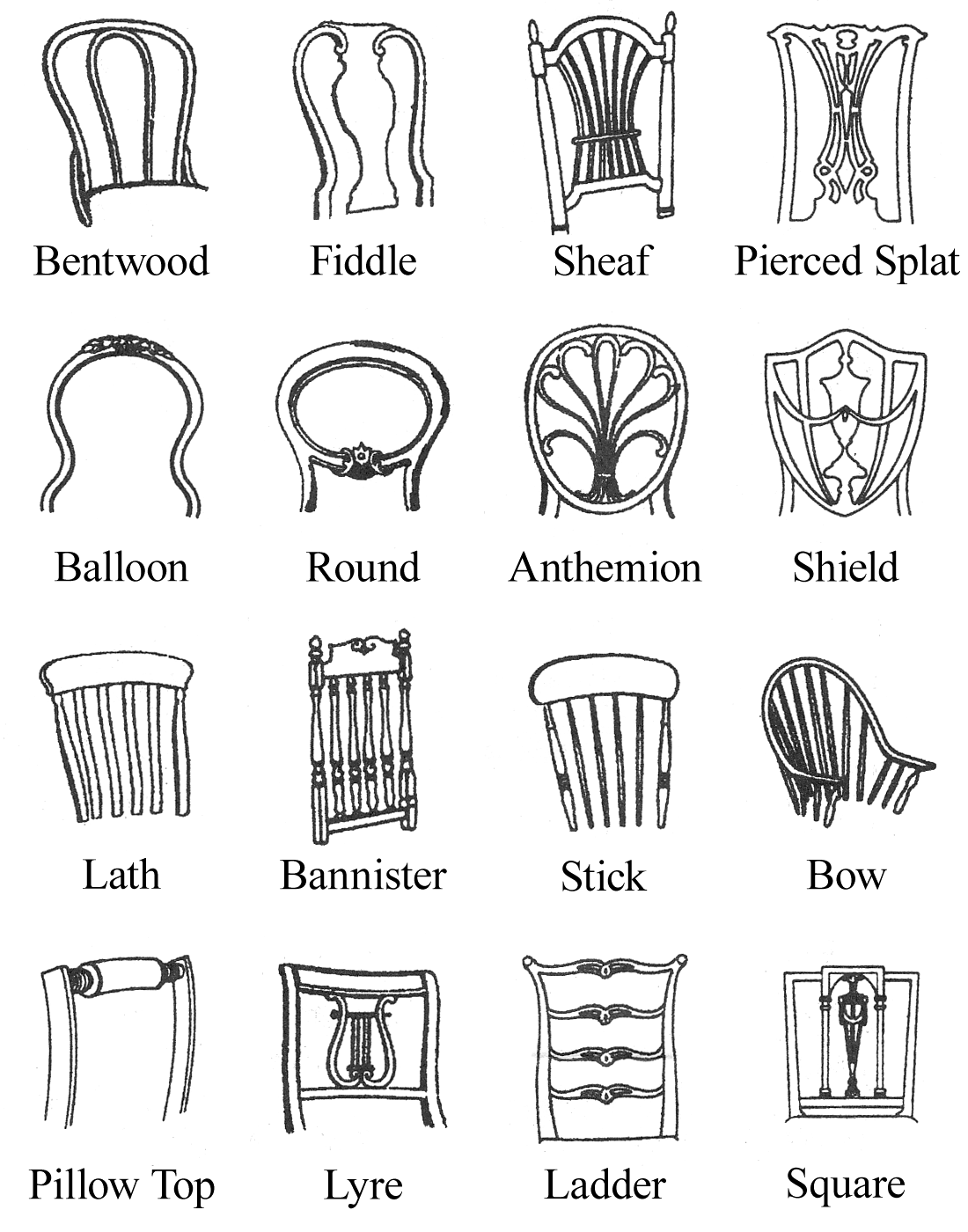From 1995 to around 2004, a magazine known as Proptology was published by a Canadian props professional named Wulf. He published a multi-part series called “A Field Guide to Furniture Styles”, which contained a lot of useful illustrations and information for identifying period Western furniture. One of the parts had a nice little list of chair backs. I have taken this information and these illustrations and arranged them in a nice little grid where they are grouped by similar appearances.
I have some other helpful illustrations in previous posts: analysis of a chair, 40 styles of chairs, and parts of a chair. Armed with these images, we are well on our way to developing a visual guide to identifying the period of a chair based on its appearance.

Bentwood: Late 1800s.
Fiddle: Characteristic of Queen Anne style. 1700s.
Sheaf: Can also be a splat which is pierced in the same style. Late 1700s.
Pierced Splat: Characteristic of Chippendale designs. Late 1700s.
Balloon: Characteristic of Victorian style. Mid 1800s.
Round: Often an open frame with no upholstery. Mid 1800s.
Anthemion: Greek motif favored by Hepplewhite. Late 1700s.
Shield: Characteristic of Hepplewhite. Late 1700s.
Lath: Curved, flat uprights. Very sturdy. 1800-1900s.
Bannister: Like stick back but with turned posts. 1600-1800s.
Stick: Primarily used in country furniture. 1600-1800s.
Bow: Typical form of Windsor style chair. 1600-1800s.
Pillow Top: A narrower top is called “Bolster Top”. 1800s.
Lyre: Popular motif in Empire style designs. Early 1800s.
Ladder: With pierced splats is called “Pretzel Back”. 1400-1900s.
Square: Characteristic of Sheraton’s designs. Late 1700s.






Do you know if there’s anywhere one can still find this magazine? It sounds terribly interesting!
Hi Alissa,
The magazine itself has long been out of publication. It still has a website up at http://home.eol.ca/~props/ though.